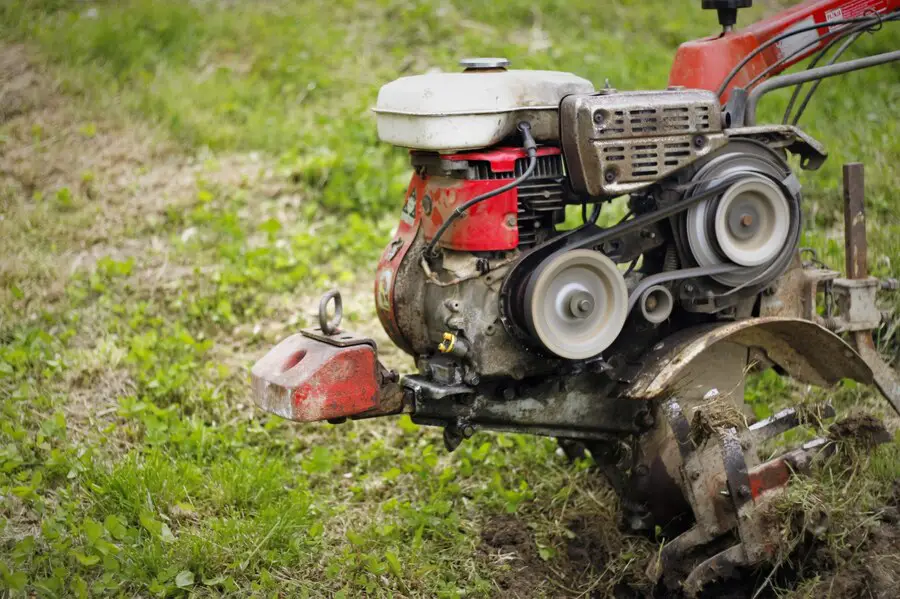
When it’s time to mow your lawn and your mower refuses to start, it can be frustrating. A lawn mower that won’t start is a common issue many homeowners face, especially as seasons change and the mower sits idle for long periods. But don’t panic – often, the problem is easy to diagnose and fix. In this post, we’ll cover practical DIY solutions to get your lawn mower back in action, saving you the cost and hassle of hiring a professional repair technician. Whether your mower is gas-powered, electric, or battery-operated, we’ll go through each potential problem and how you can fix it yourself.
1. Common Causes of Lawn Mower Failure
Before you roll up your sleeves and start tinkering with your lawn mower, it’s helpful to know some of the most common causes of mower failure. These issues are often simple to fix, so let’s dive into them:
- Empty or Stale Fuel: Gasoline left in the mower for too long can degrade and lose its ability to combust properly. This is especially common after winter storage.
- Dirty or Faulty Spark Plug: The spark plug ignites the fuel in the engine. Over time, it can become dirty or worn out, causing ignition problems.
- Low or Dirty Oil: If your mower’s oil is too low or contaminated, the engine might not start, or it could cause damage if ignored.
- Clogged Air Filter: A dirty air filter restricts airflow, which is crucial for the engine to run smoothly.
- Battery Issues: For electric or battery-powered mowers, a dead or faulty battery can prevent startup.
- Fuel System Issues: Clogged carburetors or fuel lines can also be culprits when a mower won’t start.
Understanding these causes will guide you through the troubleshooting process.
2. Step-by-Step DIY Troubleshooting
Let’s get started on diagnosing and fixing the problem. Below are the key areas to check when your lawn mower won’t start.
Checking the Fuel System
Fuel issues are one of the most common reasons a mower fails to start. Here’s how to check:
- Check the Fuel Tank: First, ensure there’s enough fuel in the tank. If the fuel is old (i.e., left in the mower for several months), drain it and refill with fresh fuel. If you’ve stored your mower for the winter, this is especially important.
- Inspect the Fuel Line: If you’ve confirmed the fuel tank has enough fresh gasoline, take a look at the fuel line. Look for cracks, clogs, or leaks that could be preventing fuel from reaching the engine. If you notice any issues, replace the fuel line.
- Clean the Carburetor: The carburetor mixes air and fuel in the right ratio. If it’s clogged, your mower might not start. Remove the carburetor and clean it using carburetor cleaner. Be sure to follow the manufacturer’s guidelines for disassembly and reassembly.
Inspecting the Spark Plug
A faulty or dirty spark plug can easily prevent a lawn mower from starting. Here’s what you can do:
- Locate the Spark Plug: Depending on the make and model of your mower, the spark plug is usually near the engine. You may need to remove a cover or panel to access it.
- Inspect the Spark Plug: Look for signs of wear, corrosion, or carbon buildup on the spark plug. If it looks dirty, clean it using a wire brush or a spark plug cleaning tool. If the spark plug appears damaged or worn out, replace it with a new one.
- Test the Spark: Use a spark tester to check if the spark plug is generating a strong spark. If not, it may be time to replace the spark plug or ignition coil.
Ensuring Proper Oil Levels
Low oil levels can lead to engine damage or failure to start. Here’s how to check:
- Check the Oil Level: Use the dipstick (or oil plug) to check the oil level in your mower. Add oil if it’s low, and be sure to use the recommended type as specified in your owner’s manual.
- Change the Oil: If the oil looks dirty or sludgy, it’s time to change it. Old oil can cause poor engine performance. Drain the old oil and refill with fresh oil.
Cleaning the Air Filter
The air filter ensures that the engine receives enough clean air to run properly. A clogged air filter can cause starting problems.
- Locate and Remove the Air Filter: The air filter is usually located near the carburetor. Check the filter for dirt, debris, or oil saturation.
- Clean or Replace the Air Filter: If the air filter is dirty, try cleaning it with compressed air or soapy water. If it’s damaged or too clogged, replace it with a new one.
Testing the Battery (for Electric Mowers)
If you have an electric or battery-powered mower, the battery is a key component.
- Check the Battery Charge: Ensure the battery is fully charged. If not, charge it for a few hours before trying to start the mower.
- Inspect the Battery Connections: Look for any loose or corroded connections on the battery terminals. Clean the terminals with a wire brush and reconnect them securely.
- Test the Battery: If the mower still doesn’t start, test the battery voltage with a multimeter. If the voltage is too low, the battery may need to be replaced.
3. Advanced Troubleshooting
If the basic fixes don’t work, you may need to tackle more advanced issues, such as carburetor or fuel line problems.
Carburetor Issues
A clogged or malfunctioning carburetor can cause starting problems. Here’s how to fix it:
- Disassemble the Carburetor: Remove the carburetor from the engine and disassemble it carefully.
- Clean the Carburetor: Use a carburetor cleaner to remove any dirt or debris. Pay close attention to the small jets and passages.
- Reassemble and Test: Once cleaned, reassemble the carburetor, reinstall it, and try starting the mower.
Fuel Line Clogs
Over time, the fuel line can become clogged with debris or old fuel. Here’s how to clear it:
- Inspect the Fuel Line: Look for visible cracks, leaks, or clogs in the fuel line. If you find a clog, you can try blowing compressed air through the line to clear it.
- Replace the Fuel Line: If the fuel line is cracked or damaged, replace it with a new one. Make sure to use the same type of fuel line specified by the manufacturer.
Starter Motor Problems
If your lawn mower is struggling to turn over, the starter motor may be faulty.
- Inspect the Starter Motor: Look for signs of damage, such as rust or corrosion.
- Test the Starter Motor: If you suspect the starter motor is malfunctioning, it may need to be replaced.
4. When to Call a Professional
If you’ve gone through all the troubleshooting steps and your mower still won’t start, it might be time to call a professional. Some issues, such as engine damage, complex electrical problems, or internal parts failure, require expert repair. It’s best to seek help if:
- You’re unable to diagnose the problem after troubleshooting.
- The engine continues to have issues despite your efforts.
- You’re unsure how to handle advanced repairs.
5. Preventative Tips for the Future
To avoid future starting problems, consider these preventative maintenance tips:
- Regularly Change the Oil: Keep your mower’s engine well-lubricated by changing the oil every 50 hours of use.
- Store Your Mower Properly: If you’re storing your mower for the winter, empty the fuel tank and clean the mower before storage.
- Use Fresh Fuel: Always use fresh fuel, especially at the start of the season.
- Replace the Air Filter Regularly: A clean air filter is essential for optimal engine performance.
- Inspect the Spark Plug Annually: Check the spark plug for wear and replace it if needed.
6. Real-Life Case Studies: DIY Fixes That Worked
Case Study 1: A Stubborn Mower Spark Plug Sara had a push mower that wouldn’t start after a long winter. After following the steps to check the spark plug, she noticed a layer of carbon buildup. She cleaned the spark plug with a wire brush and put it back. The mower started up immediately, saving her from costly repairs!
Case Study 2: Carburetor Cleaning Success John’s gas-powered mower had been running poorly, stalling out mid-job. After cleaning the carburetor and replacing the air filter, the mower ran as if it was brand new, and he was able to finish his lawn mowing with ease.
Conclusion
A lawn mower that won’t start doesn’t have to be a nightmare. With some basic troubleshooting and a little elbow grease, you can often resolve the issue yourself. Always start with the fuel system, spark plug, oil, air filter, and battery, and progress to more complex problems like the carburetor and fuel line if needed. By following these DIY solutions and performing regular maintenance, you can keep your mower running smoothly season after season.
Happy mowing!



